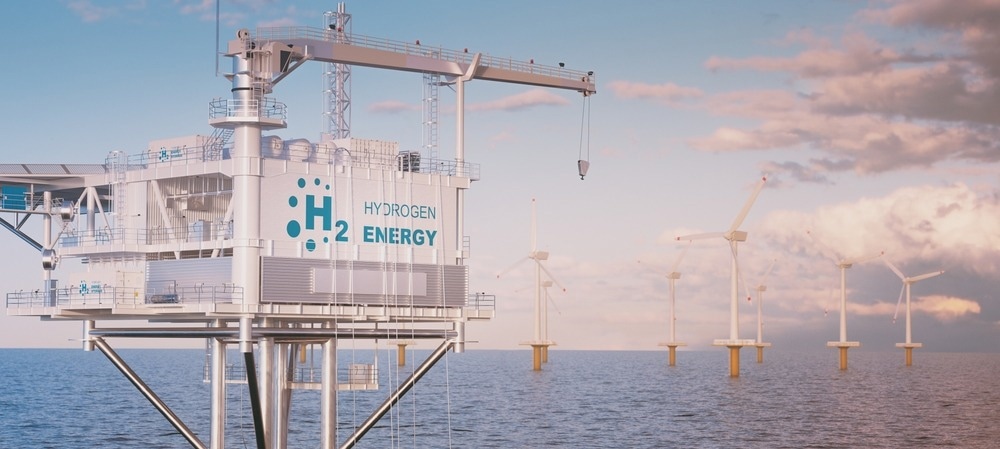A clean, promising technique for producing hydrogen is water electrolysis with renewable energy sources. There is high freshwater demand; however, it presents challenges to areas with plentiful water supplies. Consequently, it is essential to create a new water electrolysis method that can directly utilize the plentiful seawater supply.

Image Credit: Petrmalinak/ Sutterstock.com
The anode reaction in seawater electrolysis produces hypochlorous acid from chloride ions, oxygen from water, and chlorine gas. Anode electrodes made of precious metals that are resistant to chlorine, like ruthenium, iridium, and platinum oxide, are frequently utilized.
Non-noble metals, which react strongly with chloride ions, cannot be used as durable anodes, even though precious metals are undesired as electrodes for the widely used saltwater electrolysis method.
To accelerate degradation, the study team created a multi-elemental alloy electrode made of nine non-noble metal elements. They then turned on and off the power supply, which mostly caused degradation while the water electrolysis system was operating. The findings imply that anode functions driven by solar energy can be sustained for more than 10 years.
Higher voltages are needed for the anode composed of this alloy than for the valuable metal, like iridium oxide. On the other hand, this anode provides freshwater-free direct seawater electrolysis. Because fresh water is readily available, this innovation should be able to overcome geographic limitations and encourage the production of hydrogen in areas rich in renewable energy, including coastal arid regions.
The research was funded by JST-PRESTO; Naito Taisyun Science and Technology Foundation; Iketani Science and Technology Foundation; JSPS KAKENH; JACI Prize for Outstanding Achievements; a cooperative program of CRDAM-IMR.
Other funders include Tohoku University and the NIMS micro-structural characterization platform as a program of the "Nanotechnology Platform Project," MEXT, Japan. DFT calculations were carried out using the facilities of the Supercomputer Center, the Institute for Solid State Physics, and the University of Tokyo.
Journal Reference:
Shiokawa, F., et.al., (2024). Durable high-entropy non-noble metal anodes for neutral seawater electrolysis. Chemical Engineering Journal. doi.org/10.1016/j.cej.2023.147862